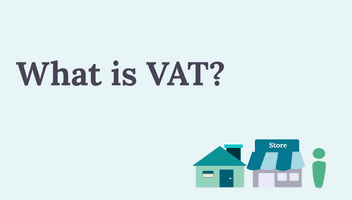With the announcement of a VAT Holiday by the Minister in the Ministry of Finance Ryan Straughn, I thought it would be a good idea to quickly remind Barbadians how VAT is calculated and collected in business processes.
Here’s what we’ll cover in this quick post:
- What is VAT and how is it calculated?
- How is VAT passed on to the consumer?
- Bonus: How to calculate an original amount from a VAT inclusive amount?
What is VAT and How is it Calculated?
VAT is shorthand for Value Added Tax. It is applied to goods and services at every point of the supply chain where value is added. “
In Barbados VAT is charged at 17.5% of the total charge of the item.
As VAT is ultimately a consumer tax, the weight of the tax is mostly shouldered by the consumer – not the suppliers or retailers.
Until the tax reaches the consumer though, the cost of VAT is passed on and recovered by interchanging players almost like a hot potato.
I’ll explain more in the section below.
How is VAT passed on to the consumer?
Let’s try a simple example with a supplier, a retailer and a consumer.
Stage 1 – Buying Wholesale
In the first stage, the retailer will buy their products from a wholesale supplier in bulk.
The retailer will pay the cost of the product plus the 17.5% value added tax. The entire tax amount goes to the government at this stage.
Stage 2 – Buying Retail
Having secured product, the retailer now looks to sell those goods for profit. Keeping this in mind, the retailer comes up with a retail price.
The consumer will have to pay the retail cost plus the 17.5% value added tax. Since the retailer has already paid VAT in stage 1, only the difference in VAT amounts is sent to the government.
Special Attention
VAT is like a hot potato.
Each entity in the supply chain imposes a VAT charge that will cover the VAT from the step before. This process continues all the way down to the consumer who shoulders the brunt of the tax (in most cases).
Therefore, removing a VAT charge at any step of the chain can cause some problems in carrying out the tax as intended – unless some balancing force is implemented.
Bonus: How to calculate an original amount from a vat inclusive amount?
Easy! Use the following formula:






